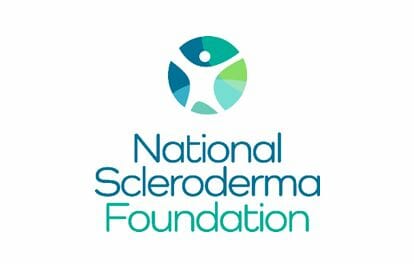ILD Day
Thank you for attending ILD Day 2023! The webinar will be available soon.
This one-hour webinar presentation will discussed why oxygen is a physiological problem with interstitial lung disease (ILD) and why supplemental oxygen is recommended. The webinar included important info about portable oxygen containers, how to get involved in oxygen advocacy initiatives, and where to find helpful information and resources.
Presented by

Gary Ewart, MHS
Chief, Advocacy & Government Relations
American Thoracic Society

Susan S. Jacobs, MS, RN, FAAN
Research Nurse Manager, Pulmonary and Critical Care Medicine
Nurse Coordinator
Center for Advanced Lung Disease
Stanford University/Stanford Healthcare

Dr. Jisha Joshua
Associate clinical professor of Medicine
Director of Advanced Lung Disease Program
Division of Pulmonary, Critical Care and Sleep Medicine,
University of California, San Diego
Quick Facts About Interstitial Lung Disease
Interstitial Lung Disease (ILD) is the umbrella term used for a large group of diseases characterized by inflammation and/or scarring in the lungs. The inflammation and scarring can injure the lungs, making it difficult to breathe and get oxygen to the bloodstream. Shortness of breath is a common symptom of ILD, along with dry persistent cough, fatigue and weakness, chest discomfort, "clubbing" of the fingertips, loss of appetite and unexplained weight loss.
- Pulmonary fibrosis (PF) means scarring of the lung and can be seen in many types of ILD.
- The inflammation and scarring can injure the lungs, making it difficult to breathe and get oxygen to the bloodstream.
- More than 250,000 Americans are living with Pulmonary Fibrosis (PF) and ILD.
- There are more than 50,000 new cases of ILD diagnosed annually in the U.S.
- All interstitial lung diseases affect the interstitium, a part of the lung.
- The damage caused by ILD can be irreversible and may worsen over time.
- ILD is difficult to diagnose. It may be debilitating and in some cases, incurable.
Watch webinars from previous years
Progressive Pulmonary Fibrosis: What Patients Need to Know
Presented by Anna J Podolanczuk, MD, MS; Weill Cornell Medicine
September 14, 2022
Dr. Anna Podolanczuk is a nationally and internationally recognized expert in interstitial lung disease. She received her undergraduate degree in Neuroscience from Brown University. She earned her MD from NYU School of Medicine. She completed residency in Internal Medicine and fellowship in Pulmonary and Critical Care Medicine at Columbia University. She received additional training in advanced pulmonary diseases at Columbia University. She also earned a Masters of Science in Patient-Oriented Research from Columbia’s Mailman School of Public Health, with a focus on epidemiology and biostatistics.
Dr. Podolanczuk is an NIH-funded investigator studying novel risk factors for pulmonary fibrosis in humans. Her research program focuses on understanding early or subclinical interstitial lung disease, characterizing imaging and blood biomarkers of pulmonary fibrosis, the role of environmental exposures, and the connection between cardiovascular disease and pulmonary fibrosis. She is also a site investigator for several multi-center clinical trials of new therapies for pulmonary fibrosis.
Connective Tissue Disease, Sarcoidosis, and Interstitial Lung Disease
September 13, 2021
Joyce Lee, MD, MS
Associate Professor, Medicine - Pulmonary Sciences and Critical Care
Interstitial Lung Disease Program
University of Colorado School of Medicine
Erin M. Wilfong, MD, PhD
Instructor, Rheumatology
Vanderbilt University Medical Center
Joyce Lee, MD, MS, and Erin M. Wilfong, MD, PhD provide an overview of interstitial lung disease and some of the diseases that can lead to interstitial lung disease (ILD). ILD is the umbrella term used for a large group of diseases characterized by inflammation and/or scarring in the lungs. Patients with sarcoidosis and some connective tissue diseases (CTD) such as rheumatoid arthritis, scleroderma, dermatomyositis, polymyositis, and Sjögren's syndrome are at higher risk for ILD. Learn more about how interstitial lung disease (ILD) is diagnosed, and how some diseases may increase the risk of developing ILD.
Symptoms of ILD
Shortness of breath is a common symptom of all ILDs. Other signs and symptoms include:
- Persistent, dry cough
- Fatigue and weakness
- Chest discomfort
- “Clubbing” of the fingertips (thickening of tissue under fingernails)
- Loss of appetite
- Unexplained weight loss
Causes of ILD
Unknown Causes of ILD
Some ILDs do not have a known cause. Idiopathic pulmonary fibrosis (IPF) is one of the most common forms of ILD and has no known cause. IPF occurs primarily in older adults and is limited to the lungs. IPF is a progressive disease, which
means that the lung fibrosis gets worse over time. The progression is variable, with some people experiencing slower but steady progression and others developing more rapidly worsening disease.
Known Causes of ILD
Patients with some inflammatory and connective tissue diseases are at a higher risk for ILD. These conditions include rheumatoid arthritis, systemic scleroderma, myositis, including dermatomyositis and polymyositis (DM and PM), sarcoidosis, and Sjögren's.
View the drop-down list below for additional information on these diseases that can cause ILD.









